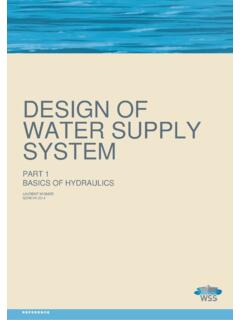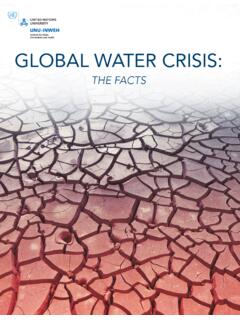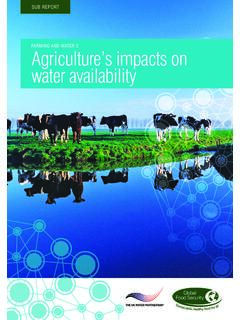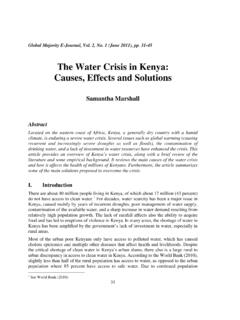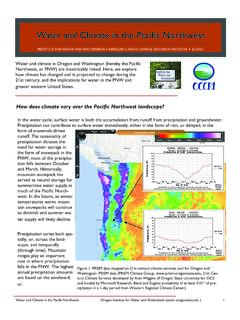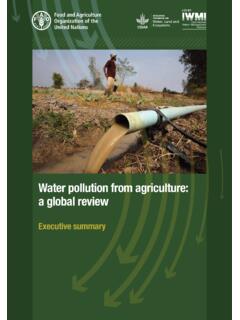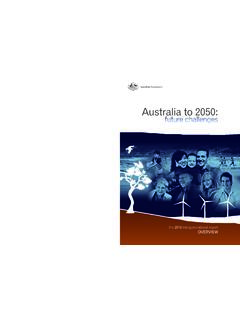Transcription of Chapter 1. Water Demand - Design Water Supply System
1 DWSS - Part 2 Ch1 Water Demand 04/04/2014 Ch1 - 1/14 Chapter 1. Water Demand What you will learn Estimate the different information needed to define precisely the Water Demand of a community. Why This will give the term of reference for the complete Water Supply System , make it working or not, sustainable or not. Duration of Chapter 1 2 to 3 hours Generality Defining properly the Demand at the beginning is the most important and sensitive part of the Design as it is at the base of all further steps. It is essential to do it carefully and not to rush through it in order to: make reasonable Design for the existing population so that it is not too expensive to maintain and operate; keep a good quality of Water ; but also with the capacity to expand it in the future for an increased Demand .
2 It needs an exhaustive knowledge of the geographical situation of the project area (sat pictures) as well as repeated discussions with authorities, technical services and users to define habits, specific needs and reasonable future planning. The following steps have to be followed, more or less deeply according to the complexity of the situation: 1) Define the significant types of demands that the System connections will have to fullfil such as household connection, street fountain, public building, irrigation, etc. Describe them precisely. 2) Evaluate the average daily consumption of the demands and estimate the expected leakages. 3) Define the existing number of users, the life span of the project, and accordingly the maximum number of users.
3 If necessary (when the increase is too big), define a specific life span and maximum number of users for each part of the System . 4) For each type of demands, define the daily pattern and the seasonal variation, for short and long-term. 5) Define the type of Water points connected to the System , specifying the expectation in term of pressure and instantaneous flow. 6) Map the project area to locate the users and the Water points. For urban area, it has to be divided by zone of relevant types and similar properties (density of population), and as much as possible coinciding with distribution zone of the existing or planned Water network.
4 For each zone, define the size (in hectare), the present number of inhabitants and the estimated number of distribution points. Then an extrapolation should be done at the life span of the project and crosschecked with the density of population. 7) Main Design figures can then be summarised such as maximum daily Demand to define the size of the tank, minimum daily Demand to check the quality of the Water , maximum and minimum hourly peak Demand to Design the pipes. DWSS - Part 2 Ch1 Water Demand 04/04/2014 Ch1 - 2/14 Types of Demand To get a realistic model of the System , the most significant types of Demand should be defined. These types of Demand are usually attached to a type of customer with specific needs.
5 Leakages can be either define as a specific type of Demand or included in the Demand patterns for each area. The main types of demands and their specification are shortly described hereunder: Household connection: It is a Water connection directly tapped on the Water network for a household. It is then assumed that the people can have direct access to the Water when they need it, making usually peaks at specific hours. To define the Demand per capita and its pattern, it is essential to know if they have Water meter, break pressure valve or storage tank; number of taps and their quality, presence of garden can also have significant effect. Street fountain: (also called tap stands or stand post) In this case, the distribution point is public and people have to fetch Water with jerrycans or buckets.
6 The distance from their house, the mean of transport and the existence of free alternative source of Water (river for washing) might have a significant impact on the quantity of Water collected. If the points are limited and the people are queuing, the pattern might be quite flat during the day and nil during the night except leakages. Special consumer such as schools, hospitals, health centres, military compounds or industrial complexes: These special types of consumer should be used only when they represent a significant Water Demand . If they are small, they can be considered as a normal consumer (like a household). If Demand is significant the quantity and pattern of Water use is then very specific and have to be defined case by case.
7 Irrigation: In some cases, Water from piped network is used for irrigation of green houses, orchard or garden. Then it will depends on the area, type of crops and weather, might vary a lot across the year. The pattern is usually quite flat as the Water is done constantly for few hours. Average daily usage The average daily usage is the total quantity of Water produced per year divided by the number of people and days. It represents the average quantity of Water throughout the year that should be produced and distributed by the System all needs included. For instance in Switzerland, it was 470 l/day/pers in 1990 and about 325 in 2010. In our case for simplification reason, we will not make the difference between the Water Demand , consumption or usage.
8 YWp: yearly Water production [m3] YWd: yearly Water Demand per person [m3/per] Pop: total number of people or users DWpavg: average daily Water production [m3/day] DWdavg: average daily Water Demand per person [m3/day/per] specificavgavgavgDWdDWdPopDWdDWp Eq. 1-1 The breakdown for a urban Supply could be, for example, leakage (14%), treatment plant usage(2%), public services (fire-fighters, fountains 7%) and commercial needs (39%). At the end, only 38% is used for households. Usage of Water in a household 5% House cleaning & watering 12% Body care 15% Drinking and kitchen 18% Laundry 20% Bath & shower 30% Toilet Source SSIGE 2010 Losses 14% Water board 2% Public services 7% Industry 22% Handicraft 17% Household 38% DWSS - Part 2 Ch1 Water Demand 04/04/2014 Ch1 - 3/14 In general, the average daily consumption figures exist for all countries and can be found easily, sometimes as national standards.
9 Sphere projects (emergency Supply ) recommend a minimum of 15 litres at household level. This evaluation has to be done per type of Demand : For household connections, the Demand per capita might vary a lot according to the country and users from 40 up to 400 litre/day/person, reasonable figures for ICRC projects might range from 50 to 200 l/d/p. In developed country it is decreasing for the last 10 years, in Switzerland it passed from 180 to 160 l/d/p. For street fountain, it depends on the distance and transport means but it is taken usually between 10 to 50 l/d/p. Special consumers Types of consumer Litre/day/type Min Med Max Out patient 5 25 In patient 40 150 350 Schools per pupil 3 25 75 Mosque 3 Live stock 5 20 30 Offices 5 30 65 In any case, it is always good to have a critical eye on the standards and to discuss it with the users.
10 For the sustainability of the System this quantity should not be exaggerated so that the people can afford to pay the operation and maintenance cost. The simplest way to check is to compare it with a nearby community with the same lifestyle Losses and leakages Losses are the difference between what is produced and what is received (the Water that can be "counted"), they are generally the leakages but sometimes they include also public services (fountain, Water garden, fire-fighters), people not paying (illegal connection) and mistakes in the meters. There are two types of leakages, the one in the network and the one at the taps. The one in the network is usually situated at pipes connections and is due to soil movement, bad compaction and poor fittings.
